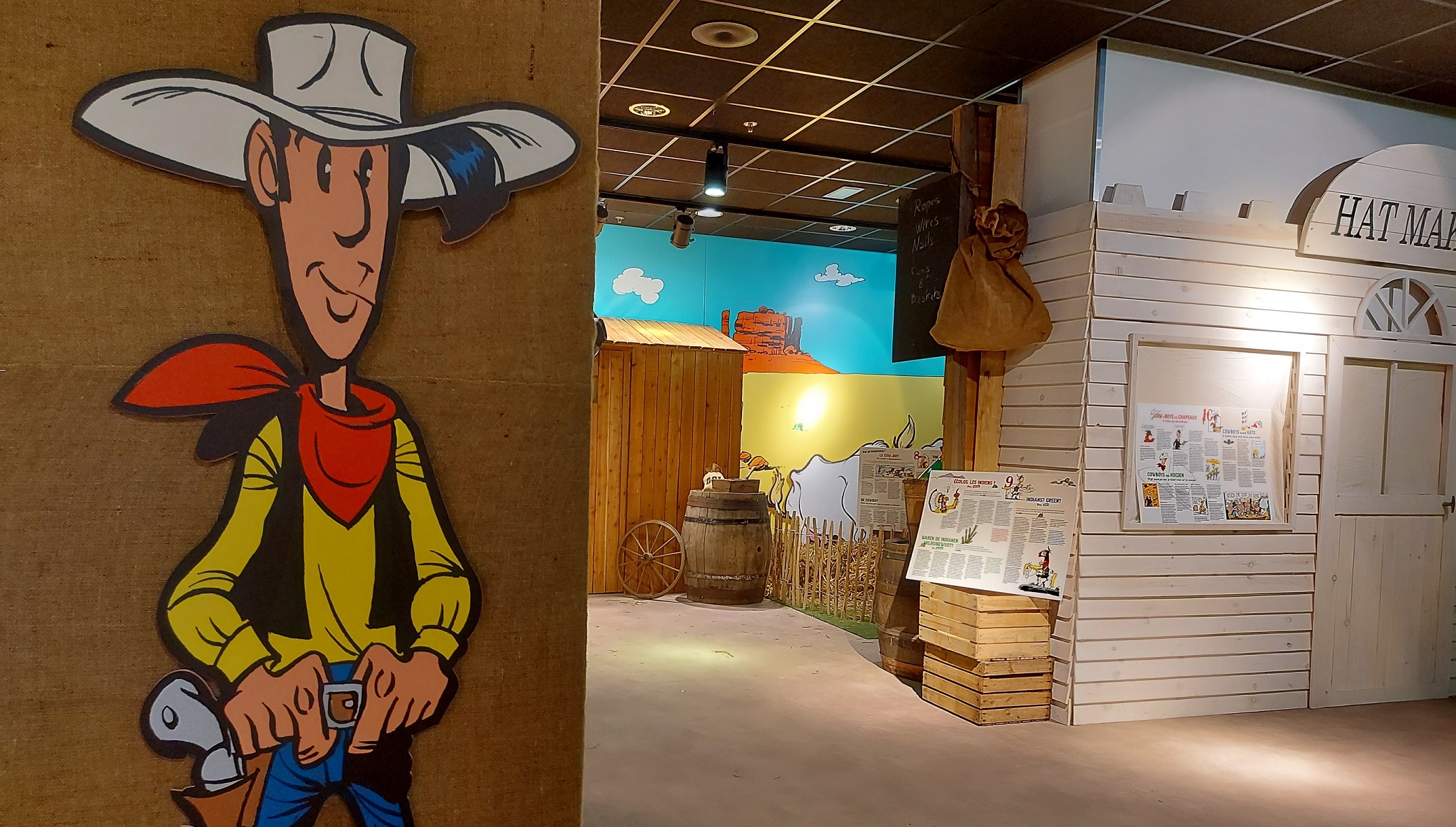- Daily & Weekly newsletters
- Buy & download The Bulletin
- Comment on our articles
Toon in: The Comic Strip Festival takes over Brussels for a whole month
It’s impossible to live in Brussels and miss the fact that it is a city that delights in its comic book heroes. Far from the impossible superheroes of Marvel, Belgium’s comics characters have their feet firmly planted on the ground, whether as intrepid boy journalists or simple physicists who can’t seem to stay out of trouble.
For an entire month, these two characters and many, many more will be in the spotlight during the Brussels Comic Strip Festival. Usually a three-day event, this is the second year in a row that corona has thrown a spanning in the works. This year, organiser Visit Brussels chose to spread it out over several weeks – which is no bad thing, says Micha Kapetanovic.
He’s the director of the Comic Strip Festival and likes the idea that residents and visitors in the capital can just happen upon festival events rather than having to seek them out. “Last year we had a huge expo at Tour & Taxis, 10,000 square metres,” he says. “This year we wanted to bring comics to the people.”
 Learn some interesting facts about real cowboys at the Lucky Luke exhibition
Learn some interesting facts about real cowboys at the Lucky Luke exhibition
To wit, the festival’s myriad exhibitions and activities take place not just in museums but in public spaces, like bookshops, parks and even shopping centres. Kapetanovic and I are sitting in in one now – a recreation of a nightclub from 1950s New York in the Anspach shopping centre.
It is part of the exhibition devoted to the graphic novel Tanz!, which tells the story of 19-year-old dancer Uli, who abandons the melancholy of post-war Germany to try his luck on Broadway. Taking on Jewish and queer identity as well as issues of appropriation, Tanz! (pictured top) is a far cry from the other exhibition at Anspach: Lucky Luke, dedicated to the comic strip cowboy that largely appeals to children.
But it’s a perfect example of what the festival hopes to achieve – to show that comics are as diverse as the people who create them. “If you ask 10 people in the street what typifies a Belgian comic, you’ll get 10 different answers,” says Kapetanovic. “Of course we have hugely famous comics known around the world, like the Smurfs and Tintin. But do these summarise Belgian comics? No, of course not. It’s a diverse community, and it’s not just about Hergé and Franquin. They were very successful, but today in Brussels there are so many comic strip artists.”
 There is no Balloon’s Day Parade this year, but the balloons will pop up in public places ©Nicolas Maeterlinck/BELGA
There is no Balloon’s Day Parade this year, but the balloons will pop up in public places ©Nicolas Maeterlinck/BELGA
Tanz! isn’t technically Belgian, though, it’s French, the work of Maurane Mazars. “The Comic Strip Festival showcases the French-Belgian wave of comic strips,” explains Kapetanovic. “But Brussels is a very open city, and we welcome comics from around the world. This year Korea is the guest of honour. Korean artists are here to do tours of their work, and we have an exhibition in the BELvue Museum where Belgian strips are in dialogue with Korean strips. It’s interesting to see the difference in styles and stories.”
It cannot be denied that Belgian strips have a global reputation that far outweighs the size of the country. Kapetanovic says this has everything to do with Belgian pragmatism.
“Belgium has a short history; it’s not even 200 years old,” he says. “Creatives from Belgium, and Brussels especially, have always been very intent on export because the market in Belgium is too small to make a living. Very early, in the 1940s and ’50s, comic artists wanted to reach other markets. At first that was France, but then it extended to other countries. So they had to write universal stories that would appeal to many different Europeans. In France, for instance, they’re all about France; they’re very proud. We don’t have that in Belgium at all.”
 Get your portrait drawn by famous Korean cartoonist Park Jae-dong
Get your portrait drawn by famous Korean cartoonist Park Jae-dong
What we do have is money to spend on comics. Whether it’s a new album of a comic that has been around for decades or something more contemporary, comic strip albums continue to be popular with kids and adults alike.
“The biggest sales in Belgium when it comes to literature are comics,” Kapetanovic confirms. “When a new Blake and Mortimer comes out, it sells better than anything else. In France, that honour belongs to Asterix. And you can still find a huge amount of comics in the supermarkets in France and Belgium. In the UK, not at all, but here every big Carrefour has a huge selection of comic strips. Because they still sell.”
The Brussels Comic Strip Festival runs until 10 October and, besides several exhibitions, includes walking tours, signing sessions, talks, treasure hunts for kids, giant parade balloons floating around town and the chance to get your caricature drawn by one of Korea’s top newspaper cartoonists. Many of the activities are free
















